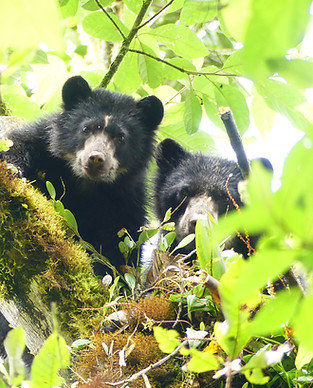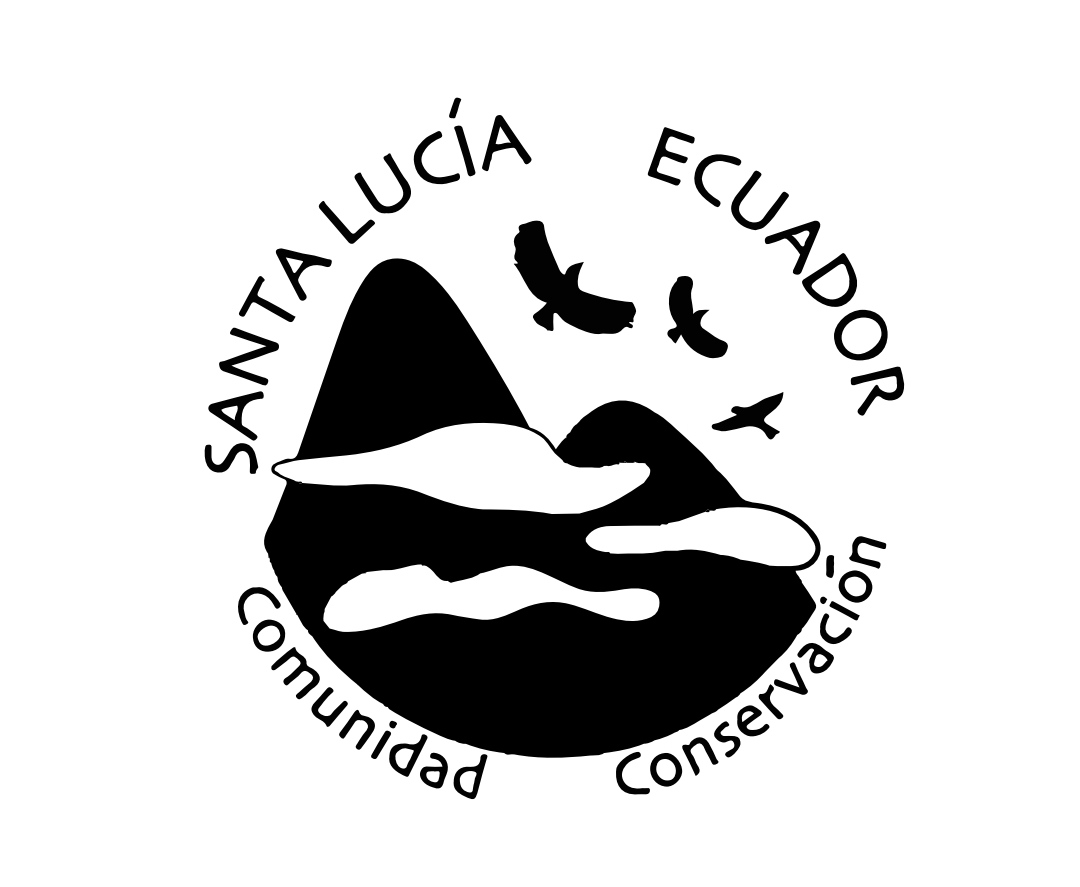
All of ours
RESEARCH PROJECTS
by Santa Lucia Ecolodge
Scientific researches in Santa Lucía Reserve
With its unique location in the cloud forest, Santa Lucía has always been a hotspot for scientists and students. The lodge is located at around 1.950m, but the reserve stretches from 1.300m to 2.500m and while 80% of it is covered with pristine montane rain forest the existing trails allow for access to forest in all elevations.
Santa Lucía is the perfect place to study not only the primary forest but also successional vegetation (pastures, reforested areas, and naturally-grown secondary forest). We have hosted and run dozens of projects over the last 15 years. Long-time relations with universities and researchers from all over the world enabled us to learn about the (wild)life in our reserve. We have also gained profound experience in hosting scientists and student groups.
Below you find a selection of projects that our reserve has seen over the last years.
Over 20 Years of Research for Conservation: Science in Santa Lucía
For more than two decades, Santa Lucía has been dedicated to long-term ecological monitoring and research in the cloud forest. Our mission is to protect biodiversity and deepen our understanding of the ecological processes that sustain life in this unique ecosystem. This ongoing work has only been possible thanks to the collaboration of our team, local communities, universities, and scientific volunteers from around the world.
🔍 Research developed in our reserve includes:
-
Monitoring of mammals, birds, amphibians, and reptiles.
-
Macroinvertebrates as bioindicators of water quality.
-
Studies on epiphytes, orchids, and bromeliads.
-
Meteorological and climate monitoring with our own stations.
These efforts have generated valuable data for conservation and helped guide sustainable decision-making. But there is still so much more to discover and protect.
-
We need your support to keep going.
On this page, you’ll find two donation options:
-
A subscription-based donation to support us monthly
-
Or a one-time contribution for any amount.
✨ Every single contribution—no matter the size—makes a real difference.
By supporting science, you're helping protect the cloud forest and empowering local conservation efforts for the long term.
📩 Want to get involved or conduct research at Santa Lucía? Contact us and be part of this journey!

Every summer we run an extensive bird monitoring in our reserve. For this reason, we have more than 160 observation points in all elevation and forest types.
The project is also financed by Mika Peck, University of Sussex.
We have been running this for 8 years and all the data is showing interesting changes in the composition of our avian species.
Thank this project our local guides received good extra training and information on birding which we use to improve our tourist services.

More than twenty mammal species have been observed since 2008 in our camera trapping projects. Many of them, such as the Andean Bear (Tremarctos ornatus) or the Oncilla (Leopardus tigrinus), are considered vulnerable or endangered in the IUCN list and have found refuge in our reserve. After working with external partners for many years, Santa Lucía took full control of the camera trapping project in 2016. If you are interested in the data, please write us.

Amphibians have been the center of several research projects so far. The list of confirmed species holds mostly rain frogs of the Pristimantis genus,but there are also tree frogs and caeciliean species present. Salamanders have been observed in the lower part of the reserve, but they have not been identified in the context of a research project.

The Cloud Forests of North Western Ecuador are known to be hots spots of Orchid diversity. Our orchid garden hosts around fifty species of this attractive family. We are monitoring the orchids there in order to learn more about the flowering times of the particular speices. Additionally we started a mapping activity for orchids in the reerve to find out about their altitudinal ranges and growth conditions.

Butterflies are often not easy to find in the forest, because species tend to be cryptic or canopy dwelling. Currently we are planning a project to find out something about diversity and ecology of Santa Lucía's butterflies.

The camera trapping project was started by Mika Peck, University of Sussex, in 2008. The intention is monitoring medium-sized and large mammals in the Santa Lucia reserve.
Since 2016 we are running the project on our own, and thanks to the financial aid of Condesan we were able to purchase cameras and get our own staff working to the field as well as to the data analysis.

During 2013 Santa Lucia was selected as a research site for a hummingbird investigation. The purpose is finding out about the interactions between these birds and flowers (feeding and pollination), and how they change during the different seasons.
The project started by Dr. Ben Weinstein and, in 2016, was taken over and is currently being extended by Catherine Graham.
Over the years we have learned a lot about hummingbird behavior and their seasonal tendencies as well as about flowering periods for the different hummingbird-related plants.

Small and flying mammals, such as rodents, marsupials and bats, have not been in the focus of the camera trapping project(s) as it is difficult to identify them on pictures produced by camera traps. Three short-term rapid assessments of bat diversity have resulted in a list twenty species.

We estimate to have around 1.500 species of vascular plants in the reserve. For some subsets (e.g. hummingbird-pollinated plants) we have good overview, but for other (e.g. many tree species) there is no good list available yet. Currently we are working to get a better insight into the plant diversity of Santa Lucía through hectare plots and transects.

Coleoptera diversity is typically a topic of small-scale student projects run by groups of various universities that visit us every year. However, a good overview and in-depth studies are still missing. If you are interested in conducting one in the reserve, please contact us!

One of the central questions in our research projects is of course: how does the forest work? How to the different component - be they biotic o abiotic - interact to create the large "dance of life" that we observe every day in Santa Lucía. Although much this is still in plans and dreams, we already have some monitorings in place that will prove to important data sources for our understanding of cloud forest ecology.

Yes, they exist. Those crazy sicentists who spend their nights out in the forest in order to find bats. We are happy to have had people like Fiona Matthews (University of Sussex), Morgan Hughes (University of Wolverhampton) and others around as guests who do just that. The species count is currently at 20 (although some observations might need confirmation) which makes the Chiroptera the most diverse mammal order in Santa Lucía - an in-depth study of rodents might change that though.

The Andean Bear (Tremarcto ornatus) has been the focus or at least part of several research project over the last years. Of course we monitor the presence of bears permanantly in the context of our camera trapping project, and addtionally scientists from all obser the world have also looked more specifically in the number of individuals and behavioral aspects of bear in our reserve.

Several short-term projects (often run by students) have looked into the diversity of reptiles and amphibians and their distribution across habitats and the elevation gradient in the Santa Lucía reserve. On of those "expeditions" lead to the disovery of a new lizard species, the Riama yumborum. Around 40 species of reptiles have been identified in the reserve so far.

There is quite a bit local knowledge on medicinal uses of local plants within and around the Santa Lucía reserve. Currently we are to update and systematize this knowledge because it runs the risk of being forgotten since there are not many people with experience on that field anymore. We are also thinking of filming a short documentation on this topic.

Nocturnal insects, particularly of the order Lepidoptera (butterflies and moths) will be subject of a series of monitorings that we are currently planning. Past experience with light traps has shown an immense diversity. However, we don't know much about seasonality and possible effects of environmental factors (such as climate change). Hence we are striving to shed some light on these issues in the near future.

Arachnids and particularly spiders are not very popular amongst a lot of people. But their role in the environment cannot be overestimated. But wait, how can we know that? Hmm ... let's do some science! Although for this particularl group of animals we currently do not have anything planned we'd be happy to share ideas or support external scientist that want to do research in our reserve.

Snakes and reptiles in general have been subject of research in the past for scientists such as Simon Maddock (University of Wolverhampton) , Connor Sullivan (University of Sussex) and others in the past. Currently we have around 40 reptilian species registered in Santa Lucía, slightly more than half of those being snakes. Currently we are planning a permanent monitoring of amphibians and reptiles which could help us getting insights into the ecology of many of the species.






